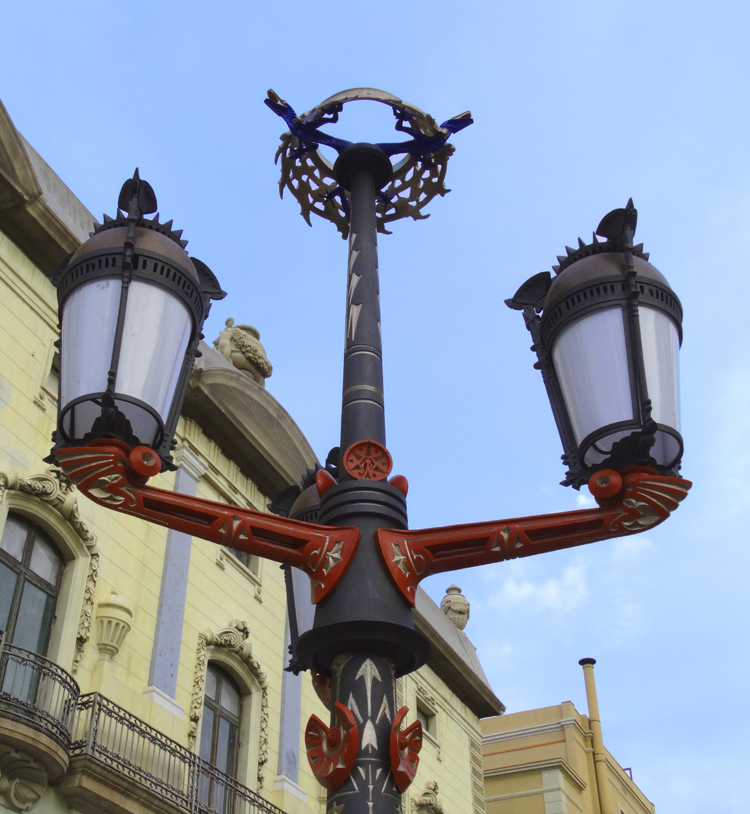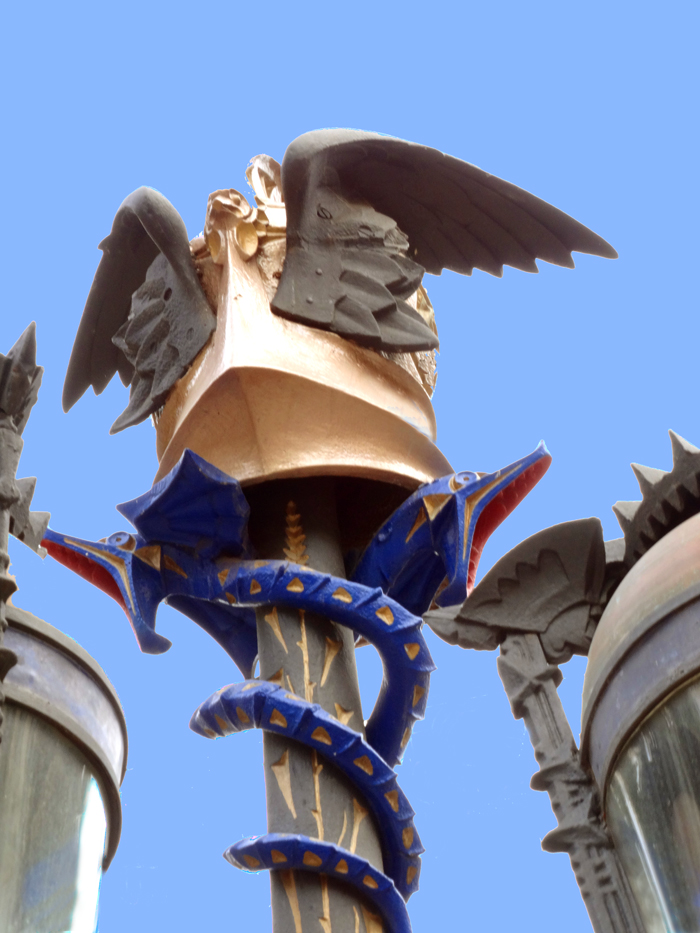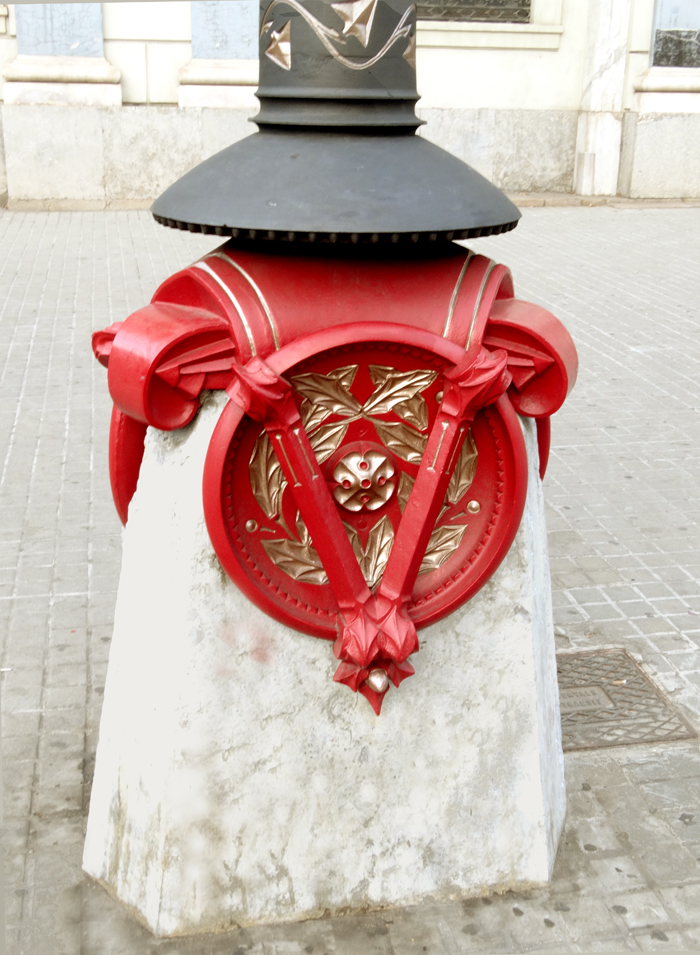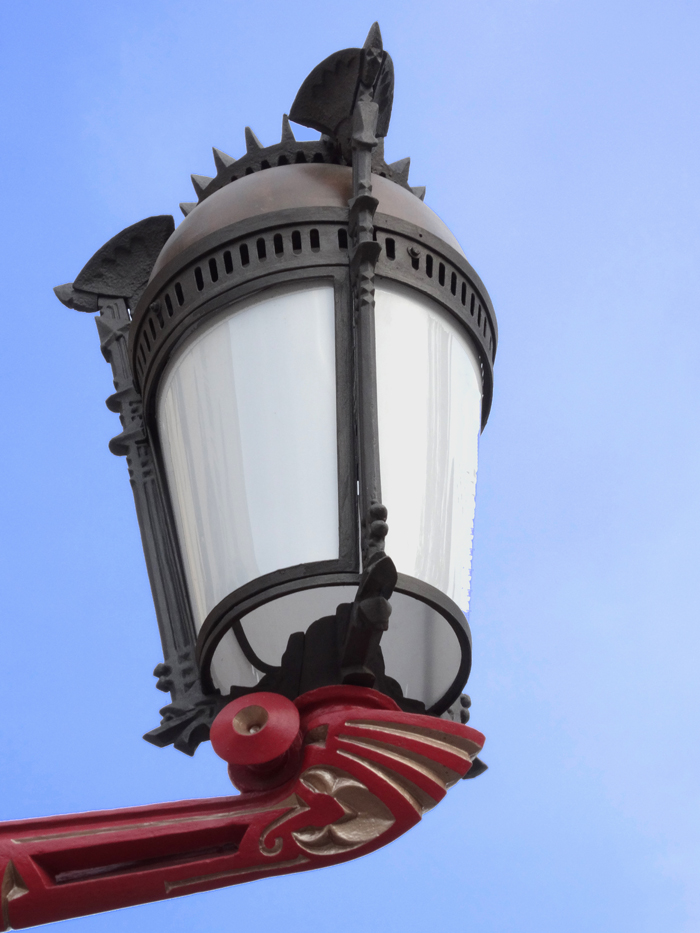In the Plaça Reial and the Pla de Palau in Barcelona can be admired some of Gaudí’s works that, despite not having the universal recognition that other ones, have plenty of qualities to be valued. They are the “Streetlamps for promenades and squares” designed in 1878 on behalf of the City Council, one of only two works by him for the administrations that he has ever completed. The commission for this project was was dated February 15 of that year.
These pieces of urban furniture are remarkable in many aspects: they combine good design, functionality, correct use of materials and techniques, and a well-proven durability with minimal maintenance. Their adaptability is no less important, since being projected as gas streetlights they were later electrified. A whole compendium of conditions to be able to mark them as early sustainable design. Another factor that makes them special is the long memoir that accompanied the project, which constitutes one of the few writings in which Gaudí explains his project motivations.

The streetlights, in two very similar models with 3 and 6 arms, are basically a cast iron shaft resting on a marble plinth. The arms are anchored to this shaft with the lamps, also made of cast iron. The Report details the design, construction, execution and even maintenance. When he gets to the ornamentation section he leaves some very interesting paragraphs. Gaudí says: “to the overabundance of ornamental sculptures, the structure of natural materials enhanced with simple profiles is preferred (…) and the love of truth in forms and materials, these are the qualities of serious and true art”.
Then he makes it clear that the decoration will be concentrated in certain important points and explains the symbolism that he wants to give to the street lamps: “The part of true ornamental importance is the finish of the support whose shape synthesizes the tradition of the history of Barcelona”. Based on the origins of the city and its history as a commercial center, he proposes the symbol of Mercury, the Roman god of commerce.
This is how the street lamps are finished with the Caduceus, a rod surrounded by two coiled ascending serpents and crowned with a helmet with two wings. This element according to Greek mythology was a gift from Apollo to Hermes and is recognized worldwide as a representation of trade. Gaudí describes in his Memory that these elements will be made of metal, and its polychrome will include gold, blue and red. In the center of the shafts there are also polychrome shields of Barcelona.
Although Gaudí envisaged them for various squares and streets of the city, finally only two 6-arm street lamps were installed in Plaça Real, another two with three arms in Pla de Palau and two more of this type in the Paseo Nacional (today Passeig Joan de Borbó), disappeared. Those with three arms have a different finish, presenting two lizards instead of snakes. They also do not have the winged helmet.


As a curiosity, it should be said that although the appointment speaks of the “young and proficient architect” in fact Gaudí was not yet titled. He had passed the revalidation exam one month ago with which he concluded his studies, but the title of architect was issued to him on March 15. Later in 1888 he was entrusted with the decoration of one of the City Hall’s rooms on the occasion of the royal visit to the Universal Exhibition. Only the armchair for the Queen Regent was made from his project, since the rest of the decoration was executed by Lluis Doménech Montaner.
These lampposts are magnificent examples of urban equipment that illuminate and beautify the public spaces of Barcelonamore since more than 140 years ago.



Details of the streetlamps of Plaça Reial and Pla de Palau. © Fundación Antonio Gaudí

